The App Boger for iPhone, iPad
and Mac (with Apple chip M1, M2 and later)
is NOW AVAILABLE on the App Store.
Boger App
Languages of the interface: English, French, German
Language of the repertories: ENGLISH
Developer: Michel Ramillon
© 2023 Michel Ramillon
Email: contact@boger.fr
A first clinical case as an exemple :
As I picked up a small tree branch from the ground, I felt a little electric pain in my lumbar spine. A lumbago gradually sets in. Constant pain aggravated on rising from a seat and during the first steps of walking, with the need to walk bent over. The pain is improved when lying with the back on the floor (hard surface).

SEARCH PAGE
The Search page displays by default the entire selected repertory. The available repertories are: General Analysis, Synoptic Key, Boger-Boenninghausen and Perso. One can make the list of rubrics scroll but this is not the best way to find a rubric out of several thousands.
Typing text in the Search bar makes you limit the number of displayed rubrics down to a few rubrics or a single one. Typing text requires a particular syntax which is detailed below. Note that 2 consecutive characters are needed for each term to be taken into account in a search sentence.
- « occiput heaviness » means finding all the rubrics whose name contains occiput AND heaviness. The space character stands for the logical AND operator. Note that « occip heav » gives the same result.
- « occip,nape » means finding all the rubrics containing occip OR nape. The comma character stands for the logical OR operator.
- One can combine the AND and OR operators as in the example: « occip,nape heav,weight ». Here the OR operator takes precedence over the AND operator.
- If one wants to search an expression, the _ character stands for a space character as in the following example: « small_of_back ».
- The search engine does not discriminate between lowercase and uppercase letters.
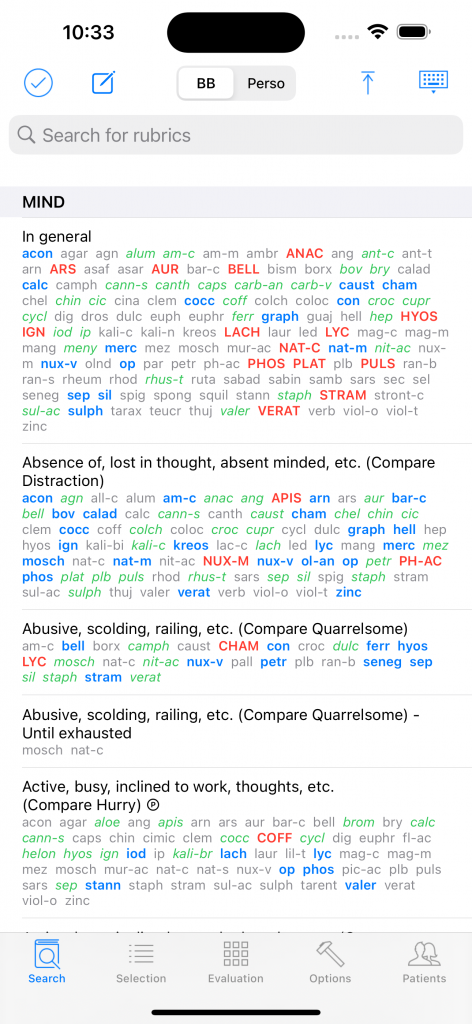
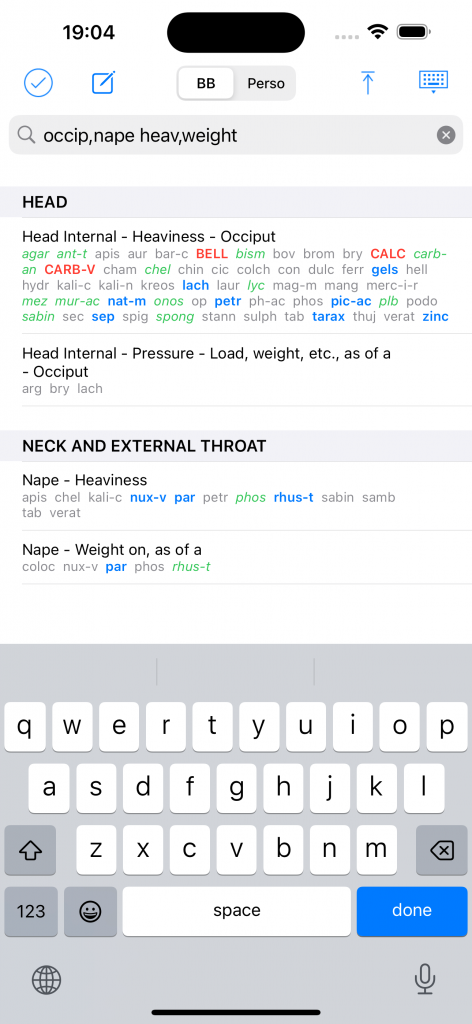
SELECTION PAGE
In the Selection page you can manage the rubrics previously selected in the Search page or retrieved back from a patient’s consultation.
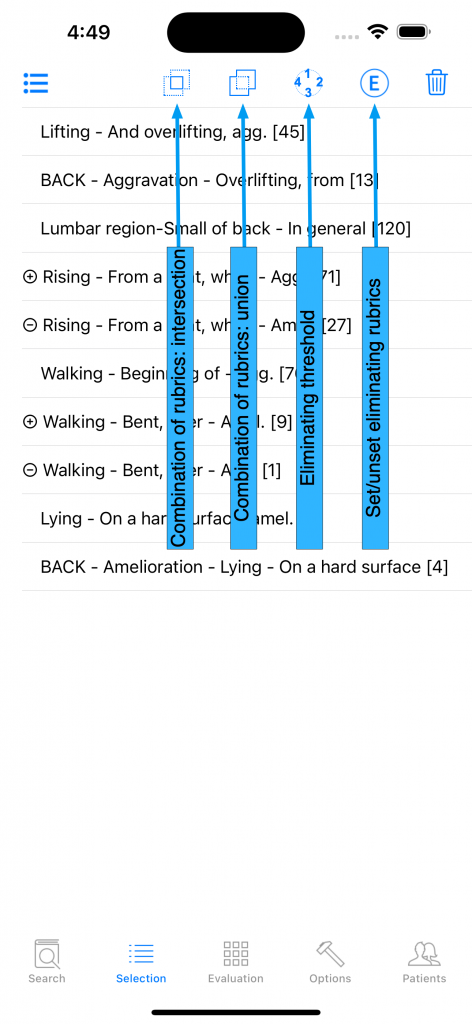

EVALUATION PAGE


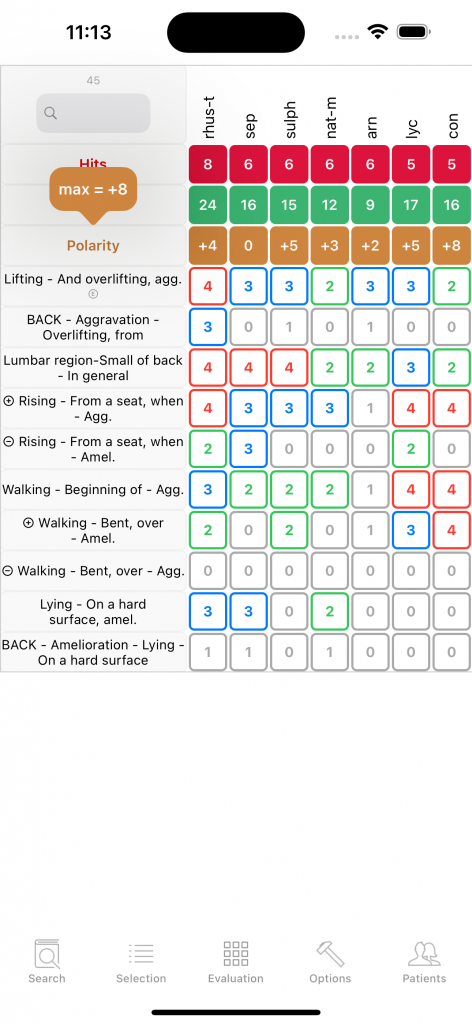
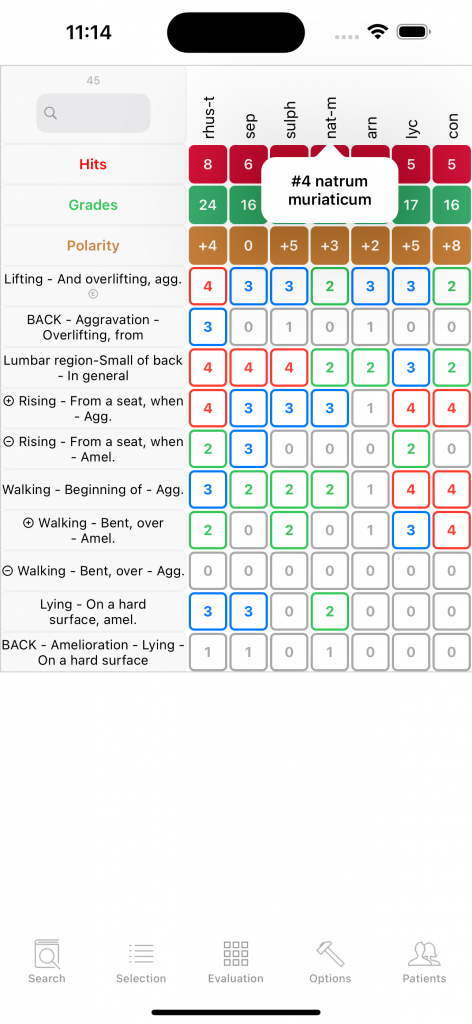
OPTIONS PAGES
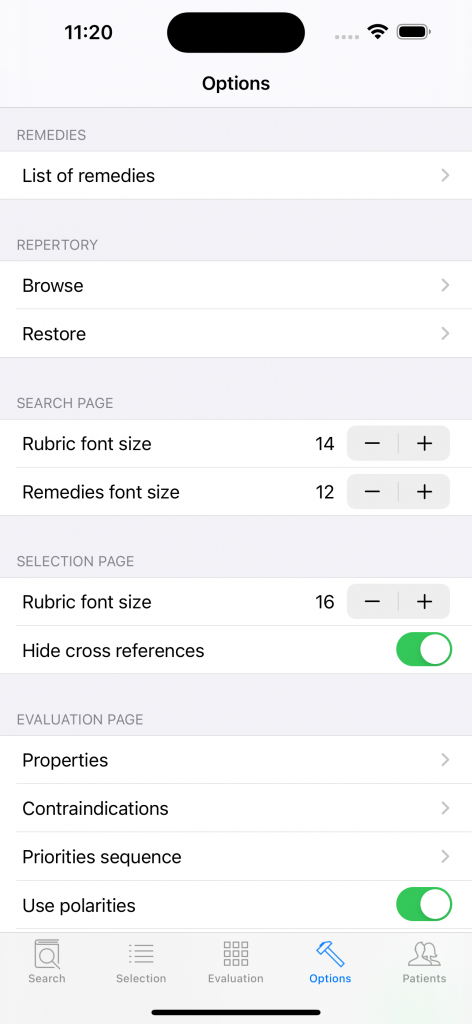
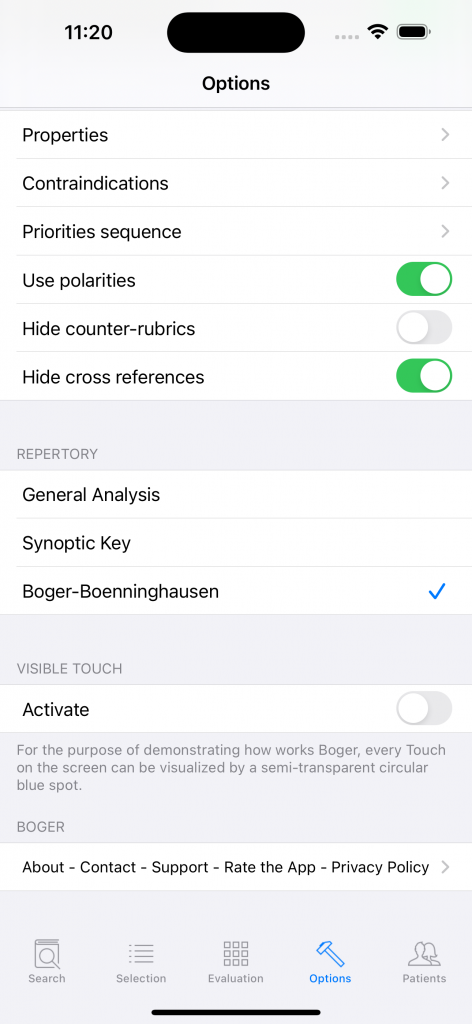
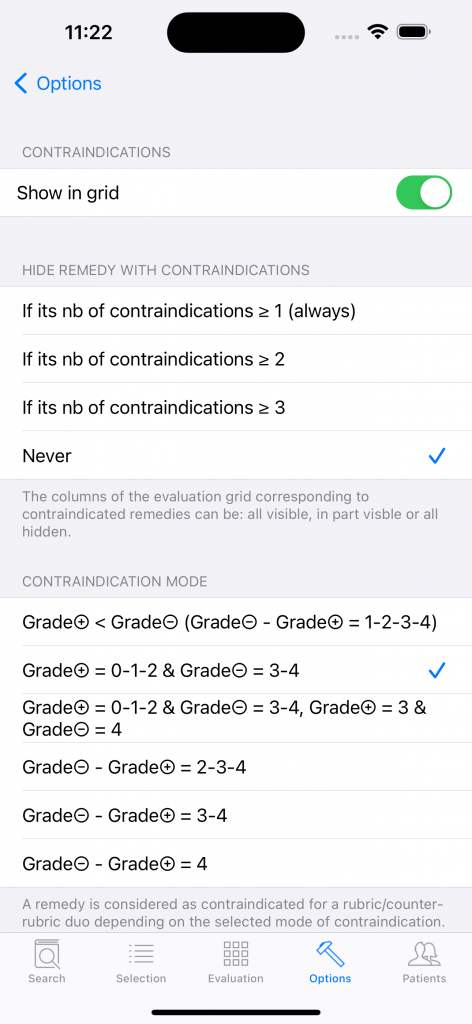
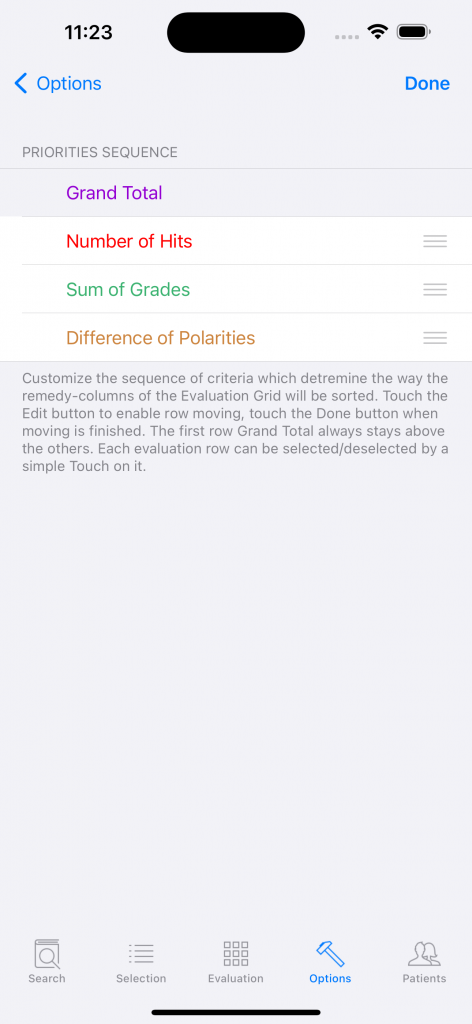
PATIENTS PAGES
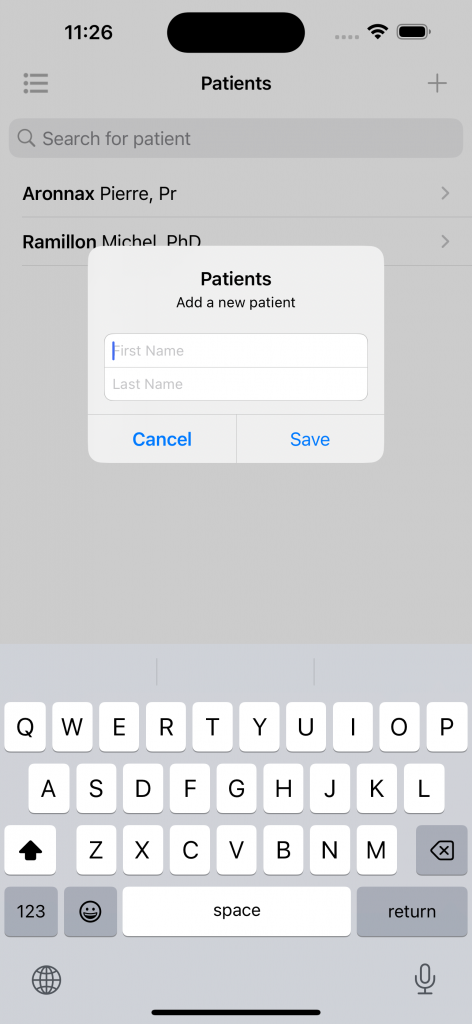
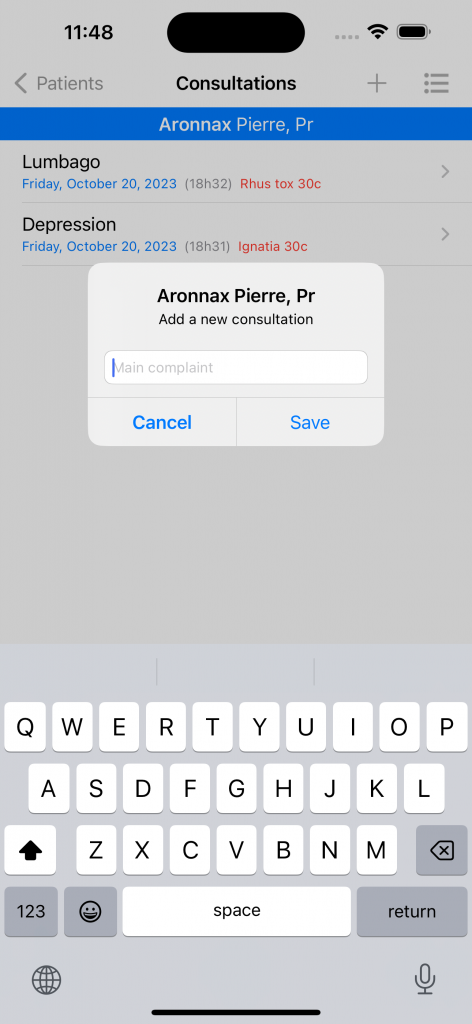

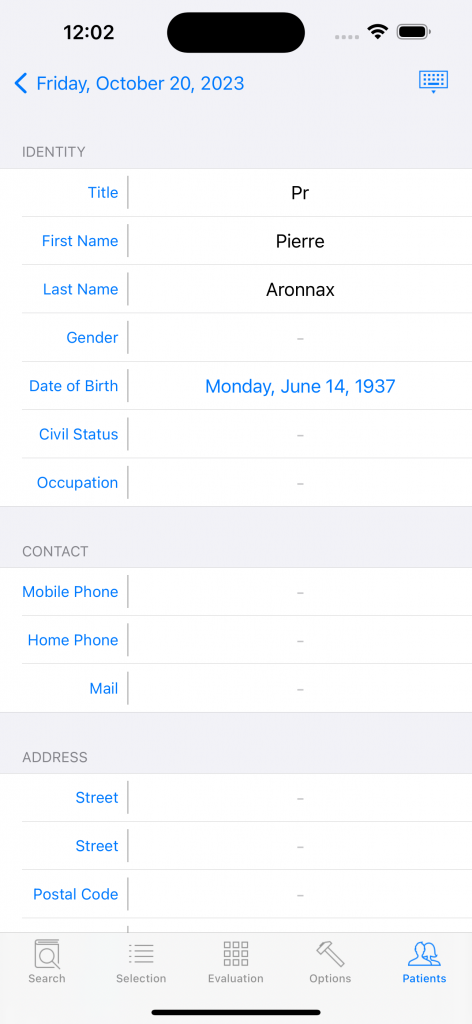
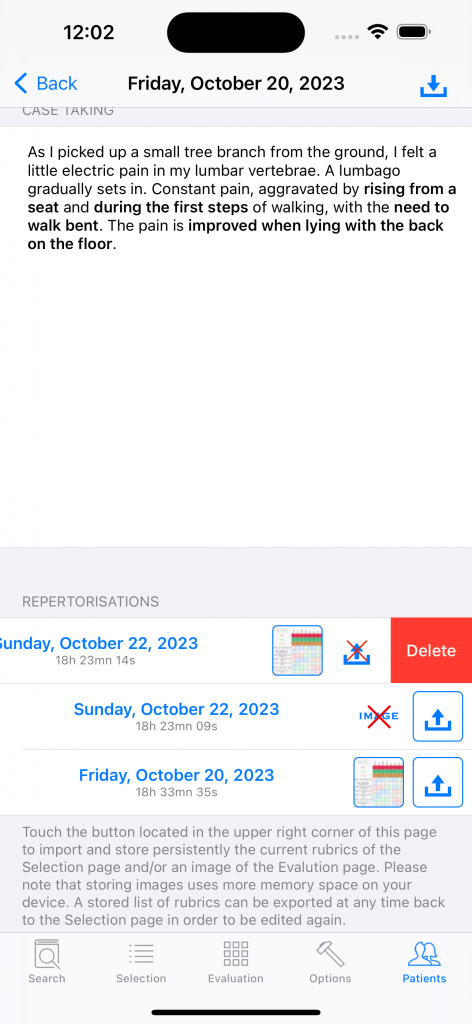
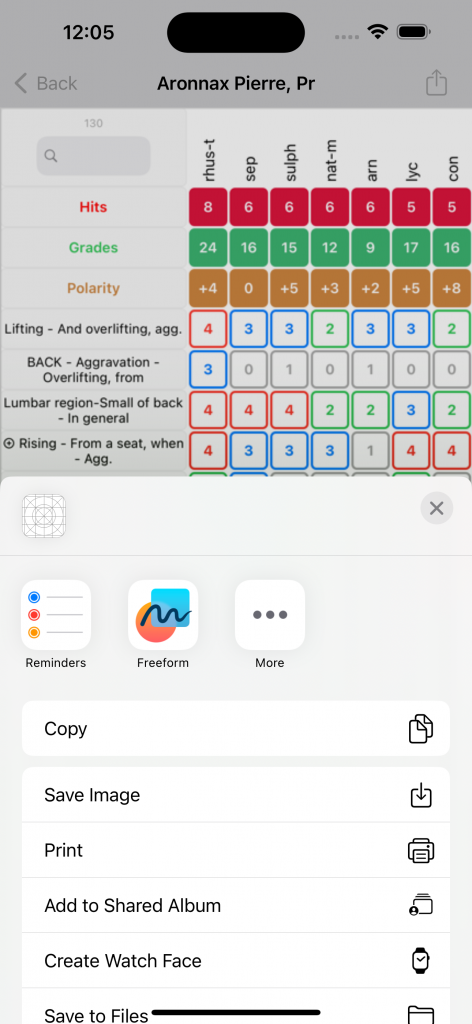
PERSO DATABASE
Touching Perso in the middle of the toolbar located in the Search page atop displays at first a blank page. This is normal since you have not entered any personal rubric yet. Then enter the Edit mode with a Touch on the Edit icon (pencil pointing into the middle of a square) and begin editing by creating a repertory with a Touch on the + icon. After selecting the newly created repertory, you can create successively Chapters, Rubrics and remedies lists, as illustrated in the pictures below.
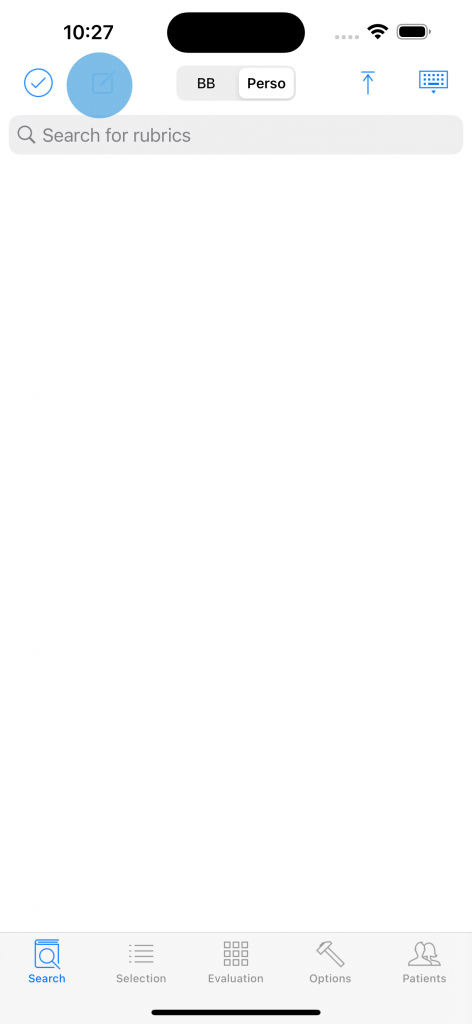
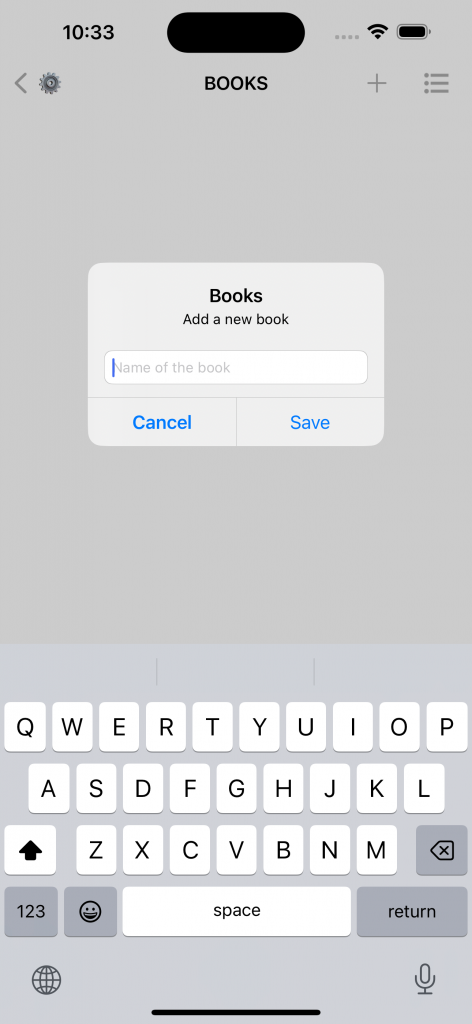
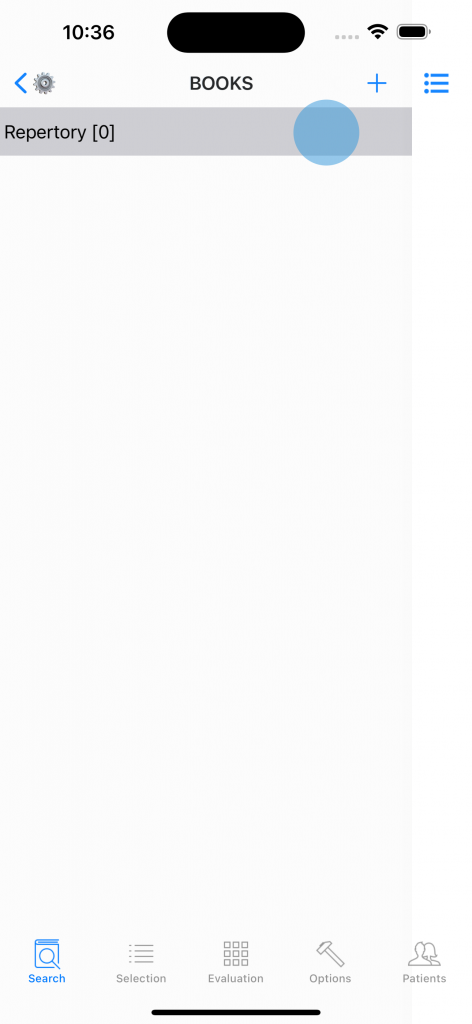
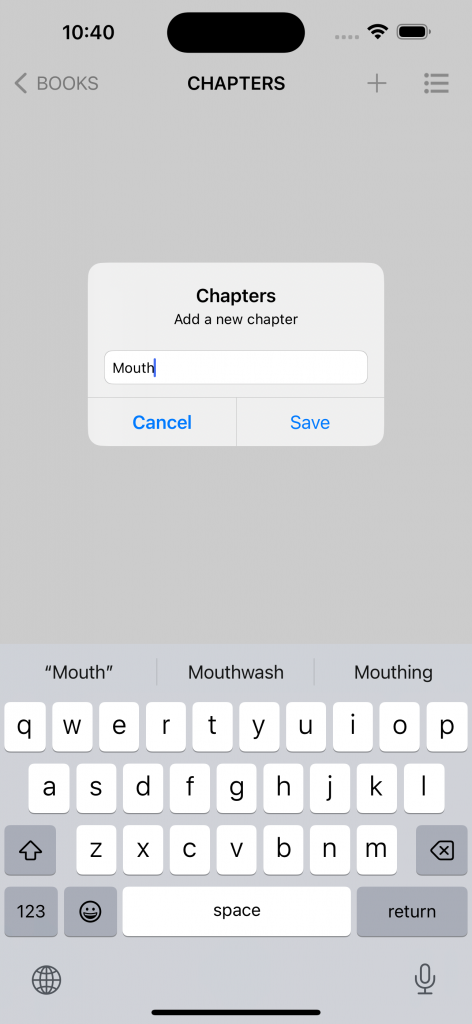

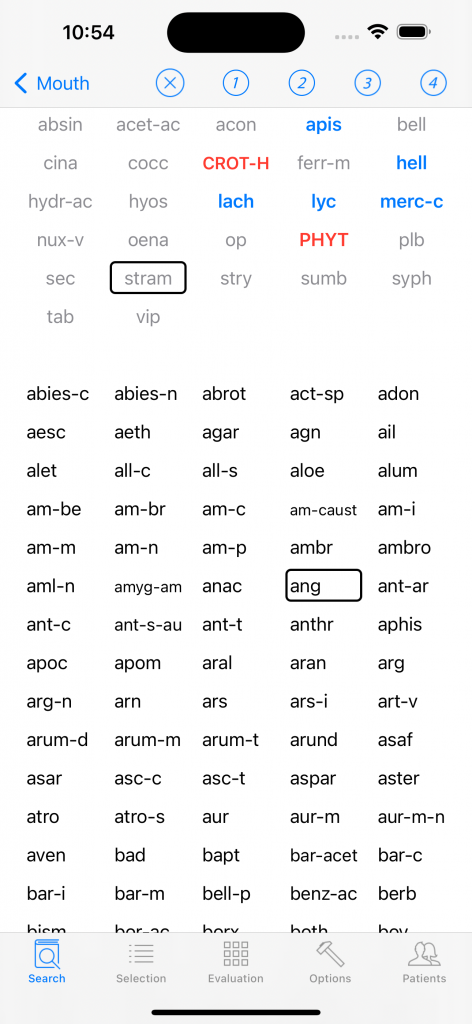
For the first selection of remedies it is recommended to select them all in the general list, then touch the ① icon. This will put all the selected remedies with a grade 1 in a new list appearing in the upper part of the window. Then one can easily change their grade to 2, 3 or 4 in this list.
After entering all the remedies in a rubric you have to go all the way back by Touches on the upper left icon. Your rubric will then be present in the Selection page, where you will be able to select it as any other rubric for repertorization. You will find this new rubric on your other iOS devices via iCloud.
CAN WE PRESCRIBE ON A SINGLE BUT COMPLETE SYMPTOM ?
Many teachers of Homeopathy, be it those attracted by Kent’s approach or strict followers of Hahnemann, insist on the idea that a case must be thoroughly taken. In practice this cannot always be achieved. For many possible reasons, the symptoms are too few or too common. With the use of Boger’s repertories, a selection of possibly indicated remedies is given even if one single but complete symptom is available. We do not want to talk here of symptoms that are keynotes and point strongly to a remedy, but of the almost innumerable ones that are observed in daily practice and will not be found anywhere in the homeopathic literature.
A complete symptom has a localisation, a sensation and a modality. It can be enriched with concomitants. Let’s take the following symptom:
Grasping sensation of the brain in the occiput, > lying on the back.
Can the Boger-Boenninghausen repertory nevertheless give a first hint ? Let’s look at the repertorisation below which has only 3 rubrics. Ignatia 30c, a single dose dry under the tongue, is the remedy that cured the case.
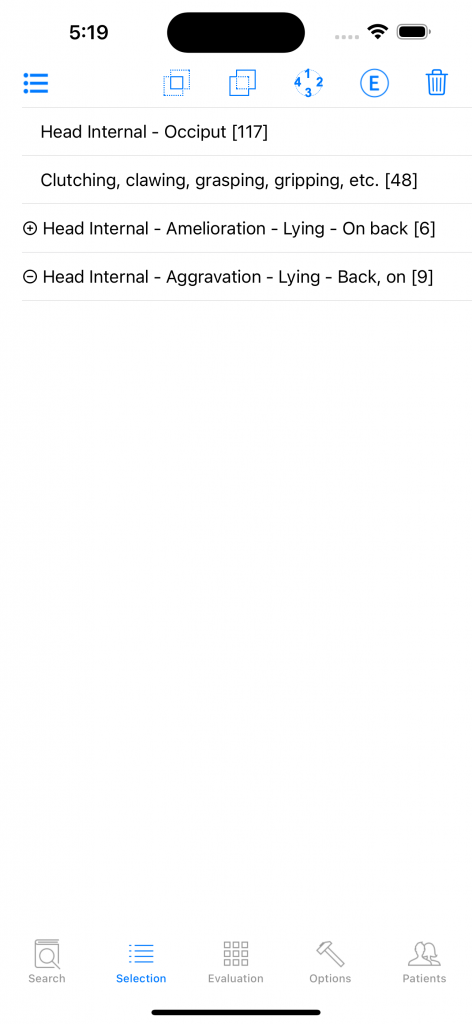
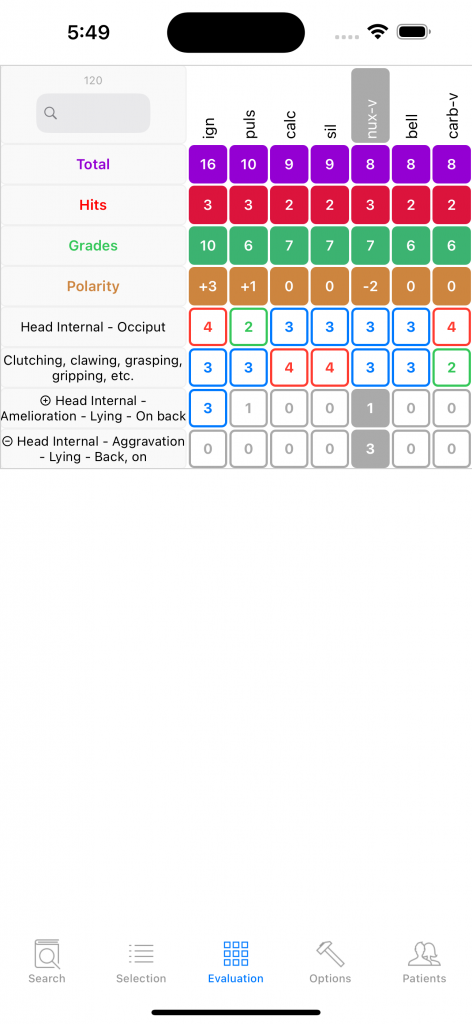
IGNATIA comes out first clearly, with 6 points ahead of the next remedy, which is not often the case in truth with a single naked symptom. Let’s now add the concomitants which could actually be elicited in the case presented here.
Grasping sensation of the brain in the occiput, > lying on the back, causing depression of the mind. An isolated sighing breath from time to time. Lethargy and desire to lie down, < in the afternoon.
A clinical case by Michel Ramillon
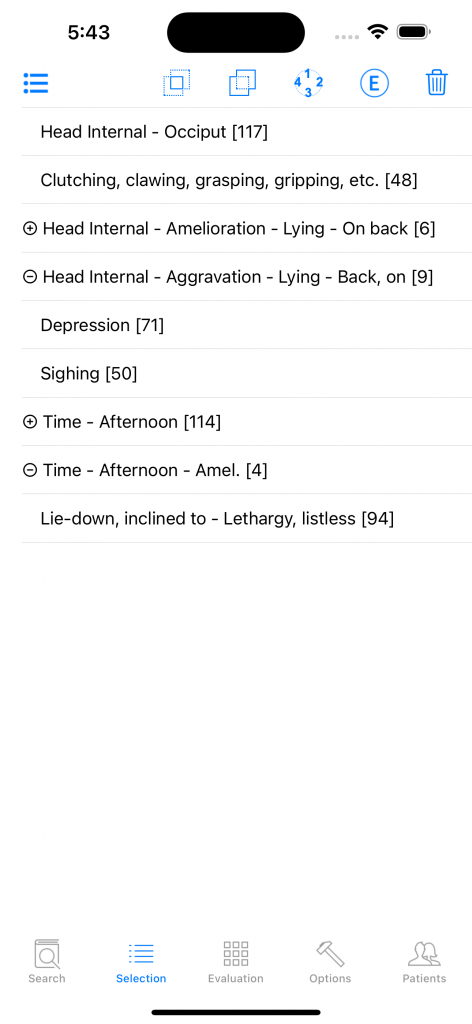
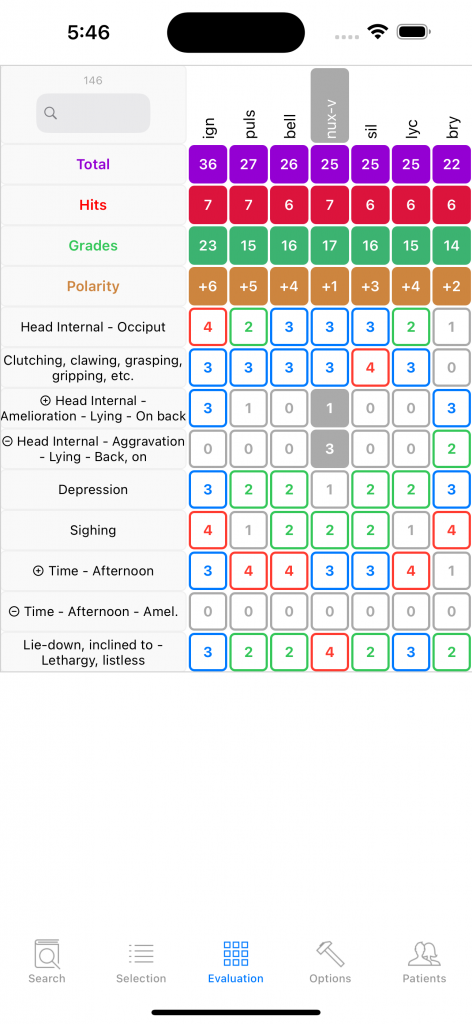
Now IGNATIA is 9 points ahead of the next remedy. This second repertorisation confirms the hint given by the first repertorisation. As a conclusion we may have some confidence in the hint given by a single symptom and will search further in the Materia Medica along the trail it has blazed.
